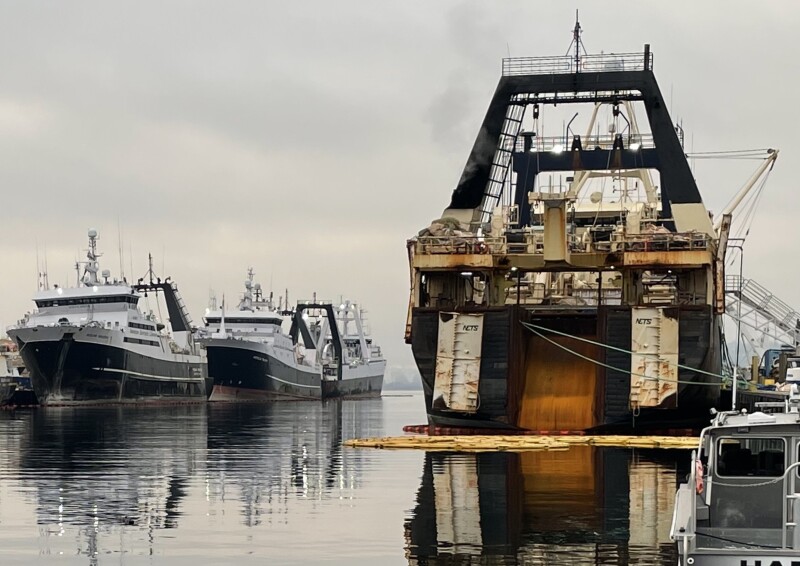After Alaska Gov. Mike Dunleavy’s Bycatch Review Task Force delivered its recommendations in November of 2022, the next step is action.
Initiated by Alaska Department of Fish and Game Commissioner, Doug Vincent-Lang, the Alaska Bycatch Advisory Council will help implement the task force recommendations.
“When we started with the task force, we wanted to create a report that has impact,” says Stephanie Madsen, executive director of the At-Sea Processors Association, and member of the Task Force and Advisory Council.
“One of the most important things is to make the information we have available to the public,” says Madsen. “To correct the misinformation that’s out there.”
According to Madsen, the task force addressed three areas in which the advisory panel will continue to work: state engagement, research, and management.
“We’re starting with state engagement, as I said,” says Madsen. “With the research we want to better coordinate with the different entities doing research. We want to get them working together and figure out who’s doing what so they can build on each other’s work, find synergies, and avoid duplicate efforts.”
One research area of particular importance, Madsen notes, is the genetics used to determine if salmon bycatch is coming from Alaska stocks or Asian stocks.
Genetic analysis, for example, has determined that 9.4 percent of the 545,883 chum salmon caught as bycatch in 2021, came from western Alaska.
“We’re getting better at the genetics,” says Madsen. “We get results in six months now, rather than a year.”
Madsen notes that the genetics can be used to identify cluster areas of salmon and help the trawlers avoid western Alaska salmon in particular.
Regarding management, Madsen notes that time and area closures to protect Bristol Bay red king crab will be addressed in the June meeting of the advisory council.
“What we’re seeing from the survey is that the crab may actually be concentrated east and north of the areas where our boats are working,” she says.
“Additionally, another task force recommendation has been initiated. An analysis is underway at the NPFMC [North Pacific Fishery Management Council] that has several options, two of which are a cap on chum and another one that looks at measures identifying areas where western Alaska salmon have been known to appear using the latest genetics.”
The task force also recommended rationalization of the Gulf of Alaska groundfish to help the fleet control bycatch. “And there has also been some work by Brianna King at Alaska Pacific University that leads us to believe we are overestimating the amount of time the trawl is near the bottom.”
Madsen notes that the work of the advisory council is just beginning.
“The Commissioner Order identifies specific tasks including recommendations on ways to implement the Task Force recommendations,” says Madsen. “There’s a lot of work ahead, but we have good leadership that will guide our work.”







